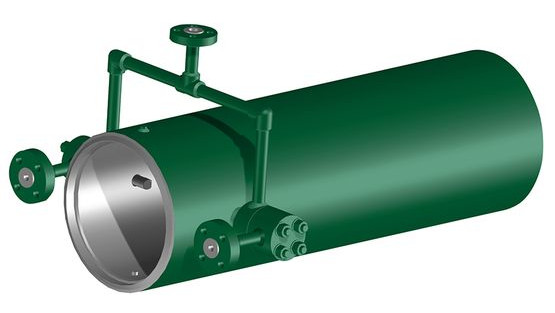Combined cycle electrical power generation facilities play an essential role in providing baseload power to the grid. The principle of operation:
…is that after completing its cycle in the first engine, the working fluid (the exhaust) is still hot enough that a second subsequent heat engine can extract energy from the heat in the exhaust. Usually, the heat passes through a heat exchanger so that the two engines can use different working fluids.
By generating power from multiple streams of work, the overall efficiency of the system can be increased by 50–60%. That is, from an overall efficiency of say 34% (for a simple cycle), to as much as 64% (for a combined cycle).[1]
Controlling attemperator temperature and overspray conditions are critical for overall efficiency. An attemperator injects a controlled amount of cooling water into the superheated steam flow. To ensure optimum heat rate and to protect the steam turbine, the steam temperature in the superheat sections of the boiler must be controlled under varying load conditions.
The superheat spray valves in the main steam system must accurately control the water injected into the steam attemperator or cooler, providing optimal main steam temperature control and stability. The reheater part of the process requires a reheat spray valve to maintain precise reheat temperature control with wide rangeability to minimize damage from cavitation.
At the October 24-28, 2022 Emerson Exchange conference in the Dallas, Texas area, Emerson’s Justin Goodwin will co-present with Duke Energy’s Eugene Eagle. From the Session Catalog, here’s the abstract of their presentation, Steam-Atomized Attemperation: Duke Energy Hot Reheat Attemperator Successes.
Some Duke Energy combined cycle facilities have been experiencing attemperator temperature control and overspray issues that are becoming more widespread as combustion turbine technology improves low-load operating ranges. These attemperator control and overspray issues are common in today’s combined cycle power plants, but CT upgrades to existing power plants are exacerbating these issues as interstage attemperators are being asked to control a much broader range of steam flows and temperatures. Utilizing a new steam-atomized attemperator nozzle technology from Emerson, Duke Energy has observed the tightest temperature control in the history of the plant, and drastically reduced the amount of thermal quench and associated damage experienced in downstream piping.
Register for Emerson Exchange to learn more about the business results of applying this steam-atomized attemperator nozzle technology. Visit the Steam Conditioning and Desuperheating section on Emerson.com for more on the technologies and solutions to drive efficiency and reliability performance improvements.

